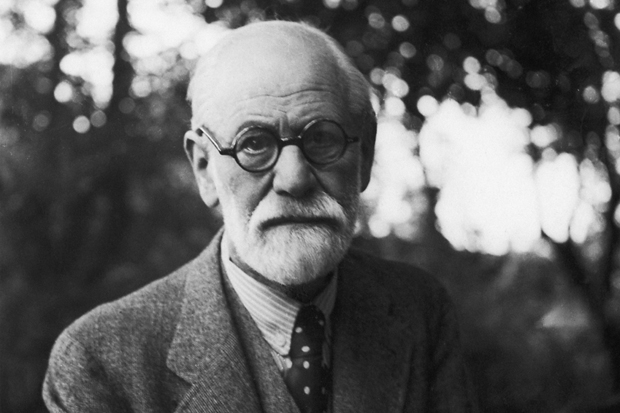Jeff Koons is, by measures understood in Wall Street, the most successful living artist. But he’s a slick brand manager rather than a tormented creative soul. The Koons brand includes a stainless steel bust of Louis XIV, a red aluminium lobster and balloon dogs, plus countless knock-offs of novelty-store dross.
It is tempting to think Koons a vulgarian and condemn his art as crapola, but to do so would be lazy. There’s no point in criticising him for his cynical exploitation of the credulous art market, since that is exactly his intention. Futile to damn him as vacuous; he’d be flattered.
All artistic achievement can be assessed in terms of skill, talent and genius. Koons has very little technical skill: his work is made by production-line assistants. He stands back from the process and the product. Duchamp? Warhol? Oh yes, we have been here before. The great Robert Hughes said that, so far as a sculptor’s skills were concerned, Koons would have difficulty carving his name on a tree.
But he has talent and genius in abundance. The sheer nerve of seeing through such a vast amount of derivative tosh is in itself a source of admiration and fascination. Early on, he was a tribute-groupie of the first generation of Pop Artists. Then he evolved into a very clever impresario of re-manufactured tat. Is it kitsch to reproduce kitsch? That was a recurrent question as, suppressing the gag reflex, I leafed through this book.
I want to be careful not to dismiss him entirely. Who is to say whether the industrialised high finish of a Koons balloon ‘sculpture’ will not one day be seen with the same affection that we now accord Caravaggio’s chiaroscuro or Van Gogh’s impasto? Koons’s crass one-liners might be an articulate commentary on our troubled civilisation. Ilona Staller, a comely Italian stripper who was briefly his wife, muse and well-publicised model, was his La Fornarina, his Simonetta Vespucci, his Hendrickje Stoffels.
What Koons does is play with the idea of art, or of what art has become. I doubt that any very sensitive or intelligent person would feel exaltation when confronted by a Koons, but it is not worth getting cross about his sub-adult work. Its expensive and charmless vacuity is perhaps a penetrating comment on contemporary values. Meanwhile, more certainly, Koons’s vast influence and huge wealth have a poisonous effect on a younger generation of ambitious artists equipped merely with skill.
To understand what’s happening, you need to appreciate the miscegenated and incestuous couplings of the art world. Koons once worked on the membership desk at New York’s MoMA, where he was well placed to ponder Kurt Vonnegut’s comment that modern art is a conspiracy between shysters and the rich to make poor people feel stupid. He soon joined the self-adoring conga line of curators, critics and art-fair entrepreneurs who populate the art world. But let it be noted that the word ‘world’ does not indicate breadth; rather the opposite. The art world is an enclosed order every bit as narrow and purblind and obsessive and exclusive as budgie world or caravan world.

This book is an illustrated transcript of conversations between Koons and the art world’s Norman Rosenthal. The latter is the rebarbative curator who, via his hosting of the Sensation exhibition when he was in charge of these things at the Royal Academy, has forever become associated with the Young British Artists. He is a sort of aestheticised Simon Cowell. Of course, the YBAs hold the egregious Koons and his tacky achievements in thrall. Yet to the dusty old academicians, Rosenthal vaingloriously debauched a fine and ancient tradition by prioritising meretricious and attention-seeking rubbish. Myra Hindley, anyone? To others, he was a bold innovator with a fresh eye. The truth is perhaps somewhere in between.
The Rosenthal-Koons Q&A published here sets, for me, a new standard of prolix, complacent, solipsistic, sycophantic, muddled drivel. It is so bad, satire is impossible, so here are my two favourite exchanges. They give a clear impression of the critical insights available in this book.
NR: Do you think that Bob Hope and Louis XIV were complacent au fond in a certain way ?
JK: It’s hard to say, Norman.
Or:
NR: Which part of Europe did [your family] come from, do you know?
JK: From Germany.
NR: So they were a German family.
I once met Koons in Paris. He was rather likeable: dapper in a suit, trim and with a nice tan. The expensive dentistry was almost electro-luminescent. Indeed, he looked for all the world like the bond trader he once was. Here is the transcript of a conversation we never had:
SB: Your work makes me feel sick and depressed.
JK:That’s cool.
SB:I find your insistent repetition of feeble ideas boring.
JK: That’s just as I hoped, Stephen.
SB: How much are you worth?
JK: Several billion dollars.
Kitsch is the corpse that’s left when anger leaves art. I am not saying Koons is kitsch, but there is no anger here. Just deadly smugness.
Available from the Spectator Bookshop, £16.45 Tel: 08430 600033. Stephen Bayley’s Ugly: The Aesthetics of Everything was published in 2012.






Comments